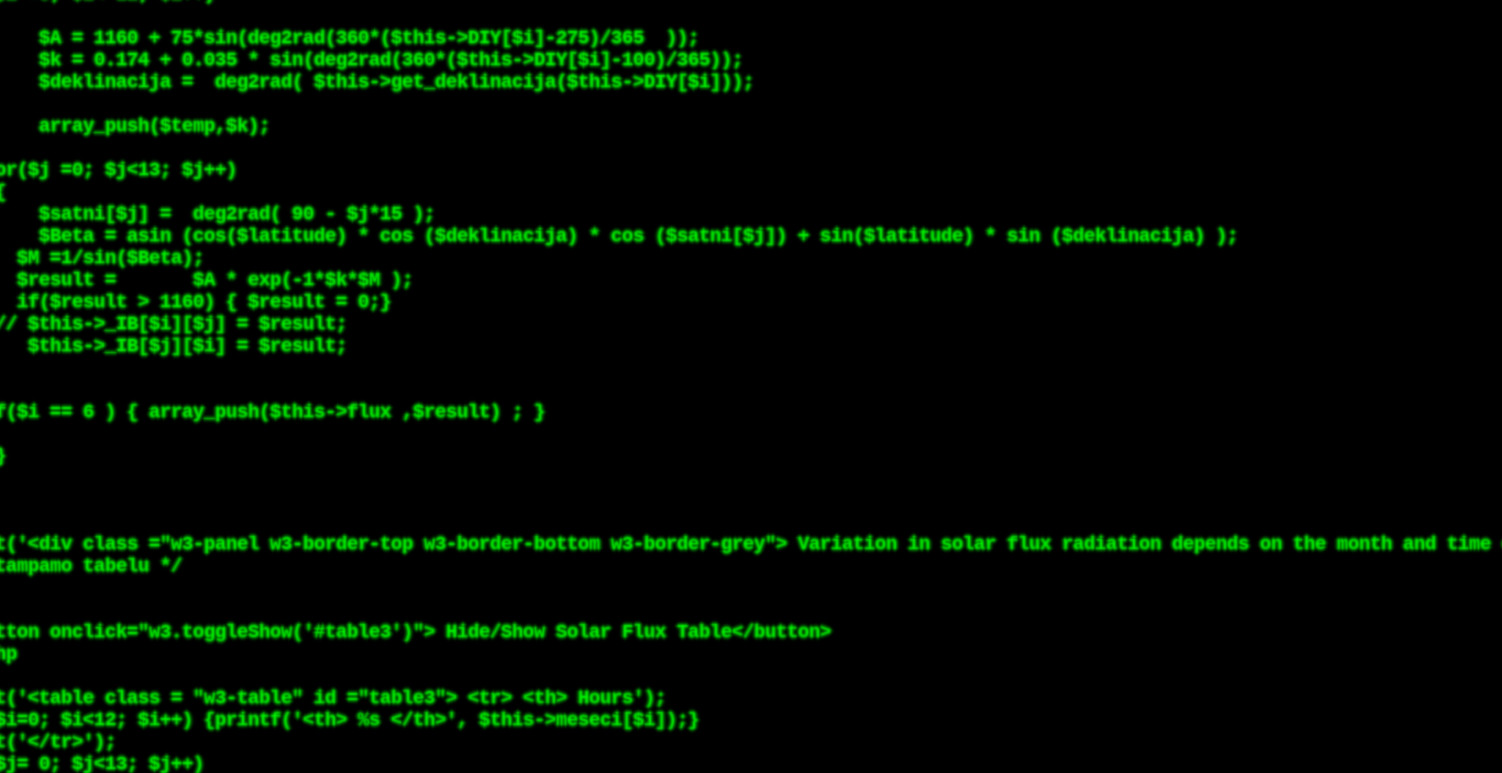There is an elaborate system for calculating the gain of electricity from the sun. In the following article, I will briefly describe the algorithm by which solar calculators work. Note: The SPAC application has some important improvements compared to the standard algorithm.
I’ll list a few solar calculator programs for electricity gain from PV modules before getting into the explanation, in accordance with Chat GPT3.5.
https://sunroof.with google.com/
https://www.energysage.com/solar/calculator-results/
https://pvwatts.nrel.gov/
The solar panel angle calculator is not on the list 🙂
Pyranometer and Pyrheliometer
It is relatively easy to calculate the basic theoretical parameters for obtaining energy from the sun through PV. However, in real conditions, due to cloudiness, local atmospheric pollution, and similar influences, radiation measurements were once performed (when the investment in PV modules was considerable) in order to determine the solar potential as accurately as possible.
There were two principle sensors for measuring solar irradiation and that
1. pyranometer
2. pyrheliometer
Pyranometers measure the total radiation that reaches their active surface. Pyrheliometers measure only the direct component of radiation.
Pyranometers are most often used in solar energy. There are several types of pyranometers, and two types are most often used: Li-Cor and Thermopylae black and white.


The working principle
The thermopile of the black and white pyranometer is in the detection of the temperature difference between
black and white segments, which is a consequence of different absorption coefficients. Unlike the black-and-white pyranometer, which measures the entire radiation spectrum, the Li-Cor type has different sensitivity for different wavelengths. Very popular was the Li-Cor silicone cell pyranometer, which measures radiation up to a wavelength of 1100 m. Given that solar cells are usually not sensitive to infrared radiation, this type of pyranometer has found mass application in solar energy.
In order to measure the total mean horizontal insolation, which were collected for
certain period (e.g. month), extrapolated to an arbitrarily oriented solar module is necessary in
in the first step, decompose the total mean horizontal insolation into the corresponding direct insolation
component Ibh and diffusion component Idh
The total mean horizontal irradiance is:
Ih = Idh + Ibh
ndex of clear sky - Kth
Mean horizontal daily and monthly insolation
The mean horizontal monthly insolation is the next important quantity. the integration of the total extraterrestrial radiation from sunrise to sunset and its projection onto a horizontal surface yields the following relation:
Io = (24/Pi) * SC * (1+0.034*cos(360*n/365)) *cos(L) * cos(S)*sin(Havg) + Havg*sin(L)*sin(S )
L – Latitude
Havg – Mean hour angle
S – mean solar declination for the given month
When the mean monthly index Kth is calculated, then Liu-Jourdan’s can be applied
relation for the decomposition of the total horizontal component of radiation into direct and diffuse:
The total diffuse and reflected radiation that falls on a solar module that is tilted
The angle Σ in relation to the horizontal can be calculated according to the following relations:
Idc = function (Idh, Σ)
Irc = function (Idh, Σ, environment)
The direct radiation component falling on the module depends on the incident angle θ which, in addition
The orientation and inclination of the module, depend on the azimuth and altitude angle. This is a very important factor that the SPAC application uses, but not in the way that other solar calculation programs use it.
The relationship between direct radiation and its horizontal component depends on the altitude angle i
is given by the relationship:
Ibh = Ib * sin (altitude angle)
The direct component of radiation falling on the module is
Ibc = Ib * cos (incident angle) / sin (altitude angle)
Slope factor Rb
By combining the previous two relations, the connection between the horizontal component is obtained of direct radiation and the direct component of radiation on the surface of the module:
Ibc = Ibh * ( cos (theta) / sin (beta)) = Ibh * Rb
The coefficient Rb is called the slope factor. When calculating the irradiation for a certain short interval
time (e.g. 10-minute interval) in which it can be considered that the altitude and the incident angle do not change – the IBC can be calculated relatively simply.
When calculating the mean daily or monthly irradiation on the surface of the module, it is best to do the calculation for each interval separately, and then average. When information is available on the average monthly (or daily) value for IH, then it is necessary to calculate the average slope factor. According to the Liu-Jourdan method for the south-oriented module, the mean slope factor can be calculated according to a certain relation and is a function of the following quantities.
Rb = function ( Latitude, Slope, average declination for month, Solar Hour )
Selection of PV module
The next step is the calculation of the efficiency of the system for specific ambient conditions and equipment. It is necessary to adopt a P.V. module. Based on the data for the selected type of P.V. module, further calculations follow.
note more about STC, NOCT read on this page
The nominal power of the panel at standard conditions is the power at the DC connections at
standard conditions (STC) and assuming that all modules have identical characteristics and
completely clean sky.
For the influence of temperature on the efficiency of photovoltaic conversion, it is necessary to calculate the average maximum daily module temperature:
T cell = T amb + (NOCT-20) / 0.8
Given that the efficiency of photovoltaic cells decreases due to the increase in solar temperature,
cells above the standard value (25 C), the power on the DC sockets is calculated.
In order to obtain the nominal power of the alternating current system under real conditions, it is necessary to include additional losses due to unpairing and module characteristics, contamination and loss in the inverter
P AC = P DC * loss coefficients. Loss coefficients range from (0.9 – 0.99)
The end of calculations?
After all these calculations, if we assume that the panel has MPPT the total power that can be expected for a month is
W = P AC * h (number of sun zenith hours)a
That’s the approximate calculation flow for most solar calculators. But I wasn’t completely satisfied with a bunch of aproximations, so I made my own calculator (SPAC), and I believe its algorithm is just a bit better.

